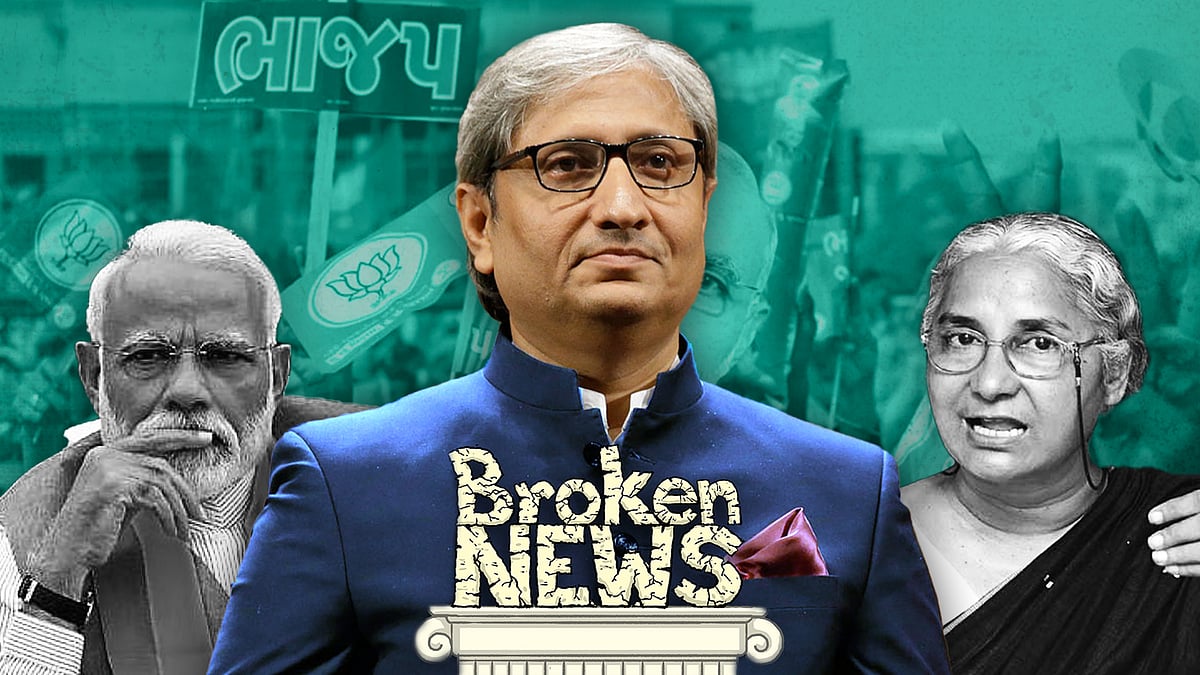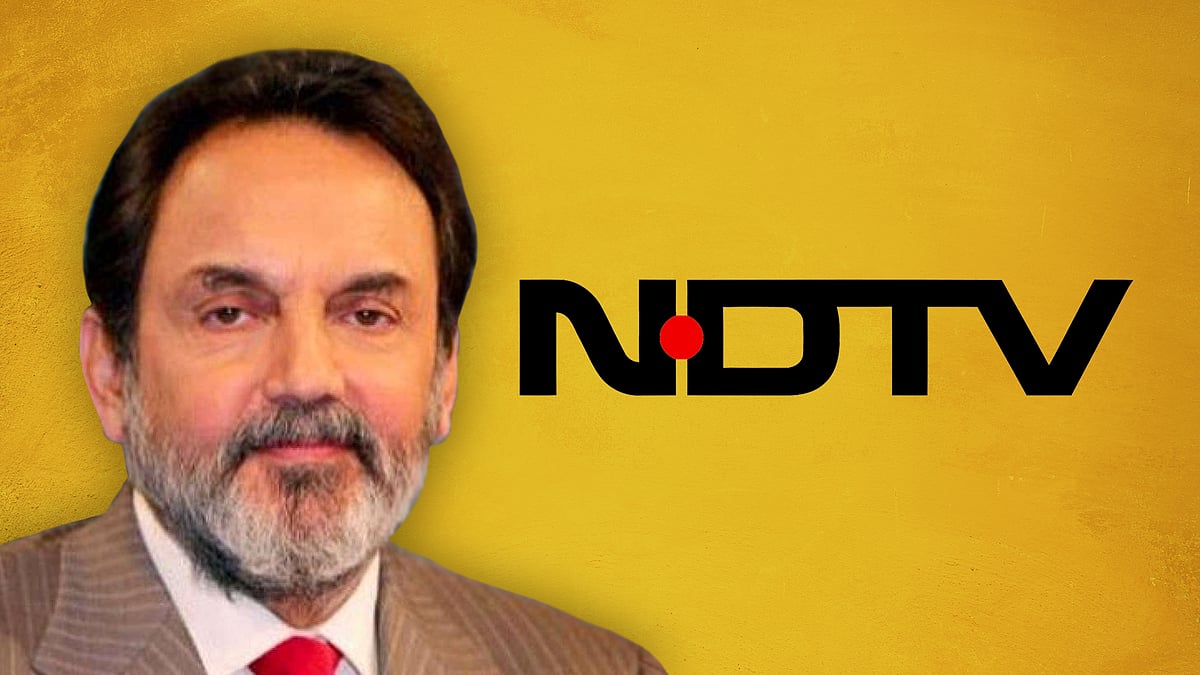It’s easy to forget the contribution of NDTV’s Roys to journalism. It’s time to remedy that
There is much to write about the Roys and it’s important to acknowledge them.
When I was in my last year of high school, a classmate declared that he had seen Prannoy Roy at a petrol pump the previous evening.
What was he doing, I asked. Filling petrol, he said.
It was a bit like getting the latest gossip about a film star. Prannoy Roy had just launched The World This Week and changed news TV forever. On Friday evenings, you could tell the time by the show’s theme music reverberating from every TV set in the neighbourhood (air conditioners were rare back then, and everyone kept their windows open).
So, a decade later, when I went for a job interview at NDTV’s office in a south Delhi building, I was deeply conscious of being in the presence of India’s biggest TV star. But, being a Bengali bhadralok who scored high on every pompometer, I had to feign nonchalance. On his part, Prannoy was humble, self-deprecating and gentle with me. I got the job by overstating my abilities.
On day one, I was tasked with writing a short script, what we called a Vo/Vt. It was about a small aircraft that had crashed. It was just a few lines long and I ended by writing “the black box had been recovered”.
Dr Roy (or ‘Doc’), meanwhile, was at the spot he always took on the doughnut-shaped table where we all sat. He was writing his anchor links and reworking what others had written when, at one point, he looked up and asked who had written the aircraft script. Clearly my brilliance had shone through on the very first day and I was going to get high praise.
“Don’t ever ‘recover’ anything, yaar,” he said instead in his customary half-amused drawl. “Just find them.”
This simple advice was pregnant with years of learning and innovation that would revolutionise broadcast journalism in India. It taught me that the language of television is always heard and never read. It cannot be writerly. It was the softest admonition possible, asking me to shed the formality of speech that I had imbibed in my prior academic avatar.
Prannoy Roy had sensed my supercilious attitude towards TV, even at my interview. “TV is a very difficult art,” he said. “You have to fight to be heard with a baby crying next door, the pressure cooker going off in the kitchen, or the phone ringing.”
Radhika and Prannoy Roy get very little credit for the pioneering role they played in Indianising the best practices of news TV from around the world. They are better known for building an institution that became an incubator for some of the best journalists of Indian television. It is almost as if their role was limited to finding and nurturing talent. Very few former NDTV employees, including me, acknowledge how much of what we know stems from what the Roys taught and instilled in us.
Writing scripts in a language that everyone can understand was only one of them. We learnt how to never compromise on sourcing our ‘facts’ to authoritative speakers, documents, data or to published research. We were trained in how to use pictures to tell our stories. In the early days, when Radhika Roy checked and edited every story that went on air, we were taught how to curb our editorialising instinct. The Roys held up to us the strictest of standards. If a text band spilled over onto another part of the story, it had to be redone. If we wore creased ties on-air, Dr Roy would gently tell us how to hang ties. He once gave my late friend Abheek Barman and me a short lecture on how to adjust make-up for specific types of studio lighting.
Most importantly, they gave us complete editorial freedom. I was the head of two of NDTV’s channels for a significant part of my career. There was only one occasion when Dr Roy called me to complain about a story. He insisted that we had got the angle wrong, but I stood my ground.
As it turned out, the story was wrong. Our reporter had been handed fake documents by their ‘source.’ I withdrew the story with a clarification but Dr Roy didn’t call me back to gloat. There were numerous other occasions when we had heated disagreements over the news, but I was never asked to change a single story.
Admittedly, this is my personal experience and I cannot speak for everyone. But as managing editor of two channels for almost a decade, I would assume that my experience would carry some weight.
NDTV has often been criticised for being a bastion of the Lutyens elite, of a connected group of English-speaking liberals. Some of this criticism is surely true, as it would be for any institution in India. However, no other news organisation in India has created a Ravish Kumar. No Hindi journalist has been given so much space and freedom on a network. In fact, Ravish was the first NDTV employee to get a show in his name, Ravish ki Report – a name coined by Prannoy Roy himself. He got it at a time when he was a well-respected reporter but nowhere close to the cult figure he has become today.
It is fashionable to say that the Roys are responsible for where NDTV is today. The pundits argue that NDTV’s decision to move away from its core business of news, and venture into entertainment and lifestyle television, forced it to raise massive finances. And when these ventures failed, NDTV couldn’t recover.
It sounds perfectly plausible in hindsight, except for the fact that in the mid-2000s, the only way to survive was to expand. No one anticipated that global finance would come crashing down in a couple of years and wipe out entire industries.
The global financial crisis of 2008-09 bankrupted many media houses. Those who survived did it by compromising on content and converting news into nautanki. That was the only way to get ratings and attract advertising revenue. I myself was repeatedly tempted to follow that path. Radhika and Prannoy Roy stood steadfast and forced me to stick to the classic path of journalism. In other networks, editors were under pressure from the proprietors to get ratings; in NDTV I was being told not even to look at the ratings charts that came every week.
There is much more to write about the Roys, things that most of us have never openly expressed out of a sense of public decency. Now that they are on their way out, it is important that we acknowledge their immense contribution, not just to us who worked in NDTV, but to the entire profession.
Radhika and Prannoy, I never showed you the respect you deserved when I was near you. Let me remedy that today.
 Journalism can be so much more than stenography. Ravish Kumar taught us that
Journalism can be so much more than stenography. Ravish Kumar taught us that Why NDTV shareholders have tendered over 53 lakh shares below market price
Why NDTV shareholders have tendered over 53 lakh shares below market priceNL Digest
A weekly guide to the best of our stories from our editors and reporters. Note: Skip if you're a subscriber. All subscribers get a weekly, subscriber-only newsletter by default.
